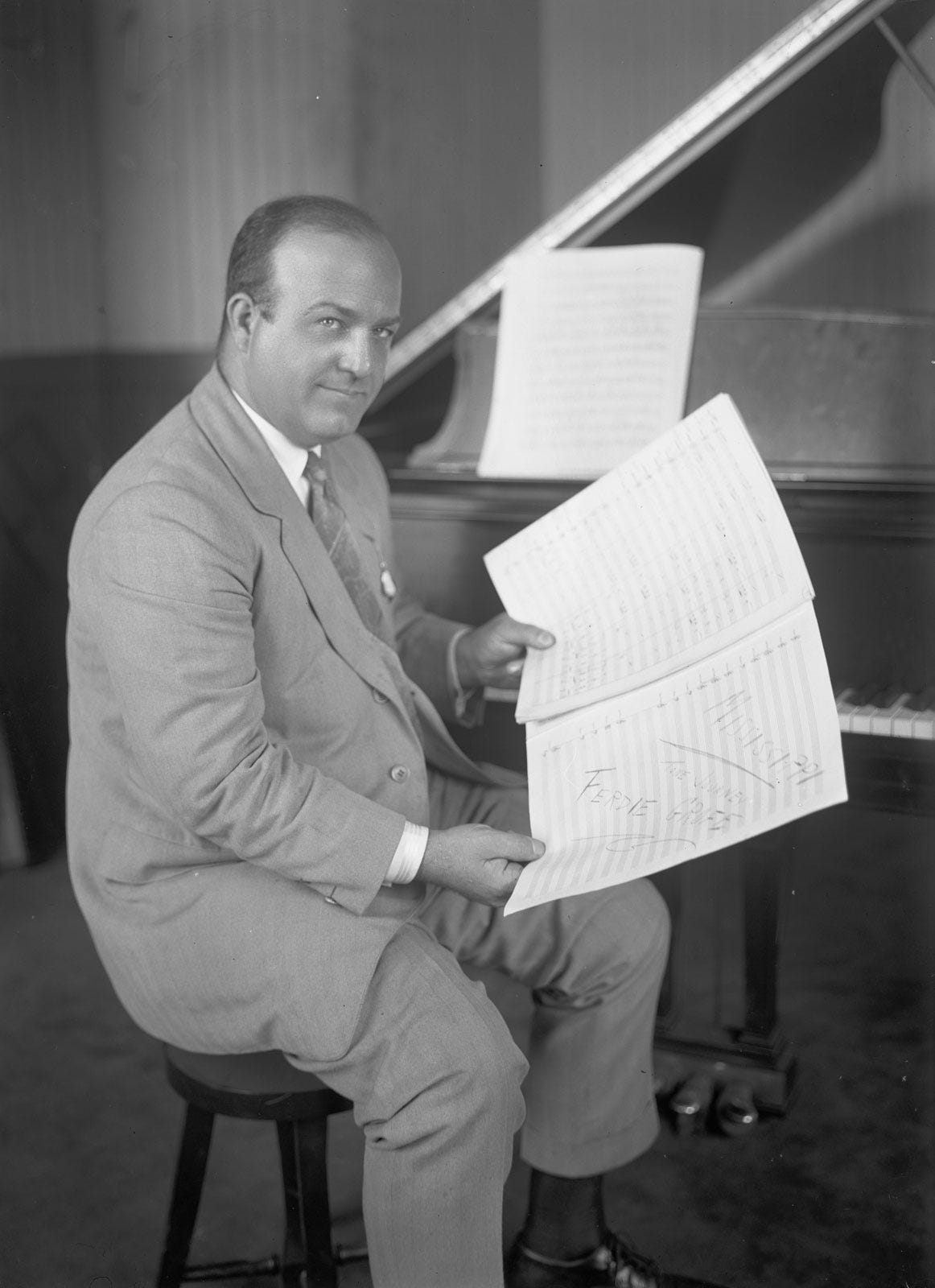
Before we dive into Grofé’s Grand Canyon Suite, I’d like to introduce Ferde Grofé. If his name now rings a bell for some, it’s either for his Grand Canyon Suite or for Rhapsody in Blue, as Grofé was the person who orchestrated Gershwin’s now iconic piece. Orchestration can mean many things, but in this case it meant that Gershwin supplied Grofé with a hand-written manuscript for piano, with one part labeled “jazz band” and the other part labeled “piano,” and it was Grofé’s job to create the parts for the jazz band. Here are the first two pages of what Gershwin gave to Grofé.


If you look closely, Gershwin does indicate that the beginning should be played by the clarinet (cl.), but everything else was left to Grofé to conjure and figure out. The unsung art of the orchestrator still exists today. Go to the website of any well-known film composer and you will see a ‘team’ of composers and arrangers and orchestrators that create a whole universe of sounds from a simple melody or a few chords. Here’s a perfect example.
Ferdinand Rudolph von Grofé was born in New York City in 1892 to German immigrants. However, at the age of four his family moved to Los Angeles, where his maternal grandfather, Julius Bierlich, was the concertmaster of the Los Angeles Symphony. Ferde played many instruments, but his favorite was the piano and by the age of 15 was playing in dance bands. However, he was also proficient enough on the viola to play for ten years in the Los Angeles Symphony, too! Directly following WWI, Grofé was the leader of a jazz band in the Fairmont Hotel in San Francisco, where his unique compositions and arrangements began to be noticed. Beginning in 1920, Grofé became the pianist and arranger for the most popular and well known jazz band of the day, the Paul Whiteman Orchestra. For the next twelve years he arranged all sorts of music for Whiteman, from popular songs and broadway musical tunes, to Gershwin’s Rhapsody in Blue, which Whiteman premiered.

During the mid to late twenties, Grofé also made many piano rolls that were very popular. Remember, radio was still in its infancy, so player pianos were quite ubiquitous. What made Grofé’s piano rolls so special, however, was that he added extra notes to the rolls, creating a sound beyond what ten fingers could achieve on a normal piano. Here’s a wonderful album of Grofé’s piano rolls made for the Ampico player piano company.
Grofé wrote many orchestral pieces. In 1926, while still with Paul Whiteman, he wrote the Mississippi Suite.
The Tabloid Suite from 1933.
The awesome Death Valley Suite from 1949.
The Hollywood Suite (1955) and Hudson River Suites (1938)
He also composed a wonderful Concerto for Piano and Orchestra from 1958. However, he had been working on this concerto since 1931.
Between 1929 and 1931, Grofé wrote what he originally titled as Five Pictures of the Grand Canyon. Paul Whiteman premiered it in Chicago in 1931 and recorded it for RCA in 1932. Here is that debut recording.
Why has his Grand Canyon Suite remained in the public’s consciousness more than any other of his compositions? I think it comes down to two people: Arturo Toscanini and Walt Disney. Toscanini was a champion of the Grand Canyon Suite and recorded it twice in the same decade, in 1943 and 1949. Grofé’s favorite recording was said to be the 1943 performance.
1943 (You can skip past the Gershwin and Sousa)
1949 —
In 1958, Disney released a live-action short film, shot in Cinemascope called, Grand Canyon. With no actors or dialogue, just beautiful and breathtaking shots of the Grand Canyon, it won the Academy Award for Best Live Action Short Subject. This wonderful 30-minute film introduced a whole new generation to Grofé’s glorious score.
Maybe there are some modern recordings of the Grand Canyon Suite out there that are good, I just haven’t found any. The third and final recording I’d like to share is Felix Slatkin’s with the Hollywood Bowl Symphony Orchestra from 1956.
